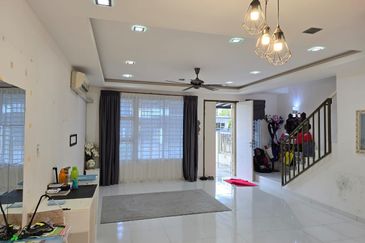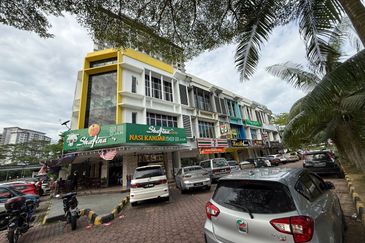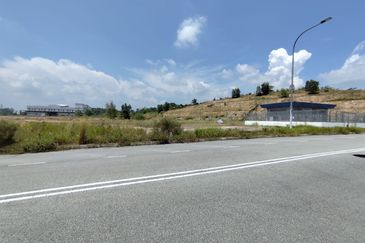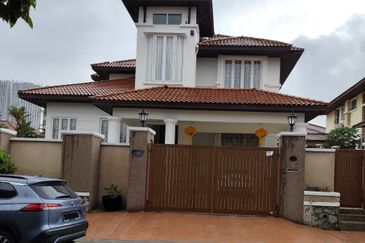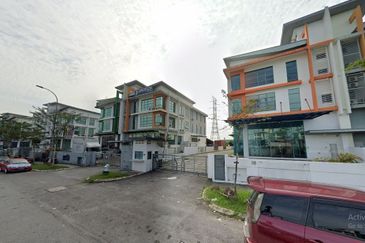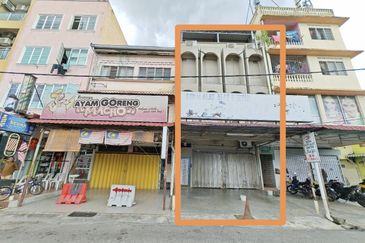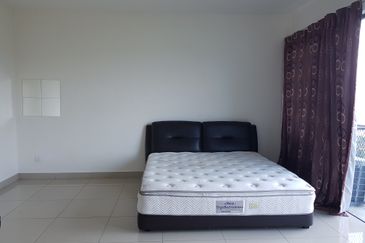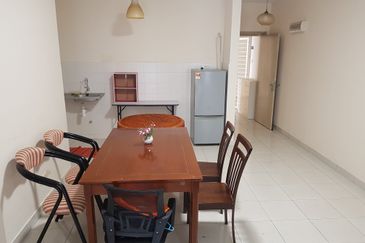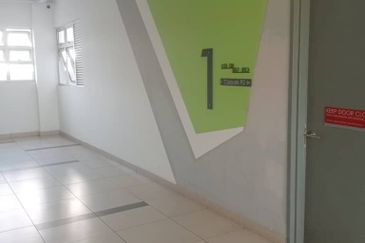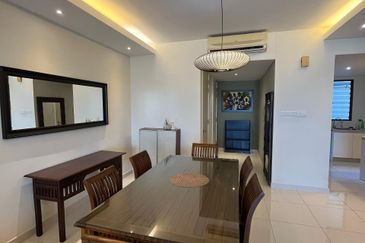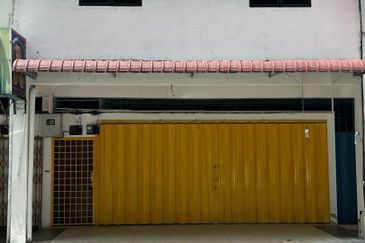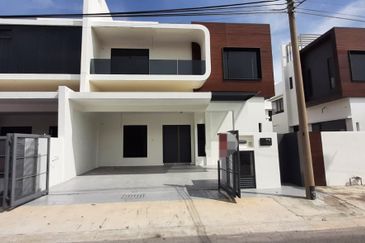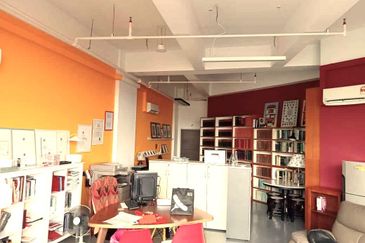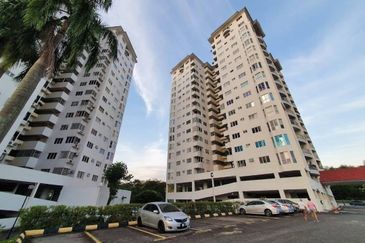
GREEN rating certifications for buildings, such as Real Estate and Housing Developers’ Association Malaysia’s (Rehda) GreenRE, are spearheading the development of a sustainable property industry in the country. Green ratings promote the integration of eco-friendly and green building initiatives into mainstream design, construction and operations.
Launched in 2013, GreenRE provides an alternative to the Green Building Index, a rating tool developed by the Malaysian Institute of Architects and Association of Consulting Engineers Malaysia in 2009, and other green rating standards in the local construction industry.
Perhaps the biggest advantage of a GreenRE rating is that it addresses a homebuyer’s concerns over a development’s sustainability principles and the environmental impact of its built structures. This rating provides an independent, third-party verification that a home, development or township is designed and built to achieve high performance in six areas: energy efficiency, water efficiency, carbon emission, environmental protection, indoor environmental quality and other green features such as rooftop gardens, self-cleaning facades, bins for horticulture waste and recyclables, motion sensors and solar photovoltaic panels.
GreenRE also looks to reduce the environmental impact of the respective buildings, considers the occupant or residents’ wellbeing and achieves real cost savings for the developer and the occupants.
“GreenRE encourages professionals in the real estate and construction industry to design and build green, sustainable buildings in an integrated manner. The availability of more than one green rating tool offers choice to industry players, enhances standards, drives innovation, spurs price competitiveness and ultimately, grows the industry. We hope that GreenRE promotes the implementation of world-class, internationally recognised green standards and that these standards are applied transparently and consistently by independent assessors,” says a spokesman for Rehda’s GreenRE committee in an email interview with The Edge.
He adds that GreenRE aims to offer a viable mechanism for developers to build and manage their buildings, projects and townships in a green and sustainable manner. “The main advantage of GreenRE is that it is an industry-specific tool and designed to suit the local situation, climate and environment. This tool is developed by the industry for the industry. Thus, the views of all relevant stakeholders were taken into consideration when GreenRE was developed.”
“GreenRE is a joint collaboration between Rehda and the Ministry of Energy, Green Technology and Water and other government agencies and statutory bodies such as the Construction and Industry Development Board (CIBD), the Institute of Engineers Malaysia and leading members of academia. Local authorities such as the National Housing Department, Kuala Lumpur City Hall (DBKL), Petaling Jaya City Council (MBPJ), Shah Alam City Council (MBSA) and the Iskandar Regional Development Authority currently recognise GreenRE’s certifications,” says the spokesman.

Getting certified
The process of obtaining GreenRE certification is fairly straightforward. Interested developers start by registering their interest with GreenRE and providing basic details about their development. They must also indicate which GreenRE rating they are planning to achieve. Residential developments can choose from bronze, silver, gold and platinum GreenRE ratings.
The next step is for the developer’s core project team — made up of engineers, architects and project managers — to meet with GreenRE’s assessors to discuss the requirements of their desired rating. “This stage is more for the assessors to understand the project as they explore the best way for the builder to go green. This process also educates the developer’s core team and builds its awareness of green-building techniques,” says the spokesman.
The following stage is an assessment and it is more stringent. This step requires submission of the prospective development’s supporting documentation. Points will be awarded based on GreenRE’s guidelines.
“After collecting and assessing all required documentation from the client (the developer), our assessors will perform an audit on the project site. This is the final verification and if our assessors are satisfied, GreenRE will issue a provisional certification graded as bronze, silver, gold or platinum. If a building has already completed its construction, a full or final certification will be awarded,” says the spokesman.
Another site visit is required for projects that are still under construction during the initial site inspection. This visit is done when the development is completed and the provisional rating that was initially given will be downgraded if the required specifications have not been met. According to the spokesman, this ensures that standards expected from a GreenRE certification are not compromised.
Rehda regularly offers GreenRE manager courses to heighten awareness of the usage of its tool. These courses are practitioner-led lectures that focus on the practical application of GreenRE. “The design of GreenRE enables a qualified consultant, an architect, a mechanical and electrical engineer or a facilities manager, to pick up and easily use this tool. There isn’t a need for in-depth studies,” adds the spokesman.

Minimal cost for passive designs
Some industry participants believe that it is difficult and expensive for a development to comply with the requirements of a green rating. This is a misconception, says the GreenRE spokesman.
GreenRE advocates passive design elements that can be quickly implemented at a minimal cost. An example of a passive design element is to construct most windows on the walls on the north-south axis. “Minimise a building’s openings on sunny walls that face east and west. This may reduce the need for airconditioning. It is a simple and effective measure that can be quickly and easily implemented,” says the spokesman.
He adds that GreenRE’s assessment fees are very competitive. “Fees are about 20% lower than the other green rating tools in the market. This does away with cost concerns that may deter builders and homeowners from going green. If cost savings are generated with the use of green designs and features, they can be passed on to the buyer or the end user,” says the spokesman.
Furthermore, GreenRE does not stipulate the use of specific products or brands within a development or the use of third-party consultants during the construction stage. “Developers do not need to acquire specific green products to be awarded points in our assessment criteria. This provides them with the flexibility to choose the design and products that will ultimately translate into cost savings for the end user,” says the spokesman.
“There are many ways to generate cost savings for the end user of the respective green building. This may be simple steps such as using LED lights instead of incandescent bulbs. The former saves more than 30% in electricity costs. Another example is the use of low-flow taps and smart showers that can save up to 39% in water usage. Office buildings and malls that use smart escalators and smart lifts that stay idle when unused can also generate electricity savings of up to 30%,” says the spokesman.
“A major shopping mall operator located in the Klang Valley worked with the GreenRE management team to reduce the mall’s energy consumption. After three months of implementing the recommended energy-efficiency measures, the mall reduced its monthly electricity bill by more than 30%. This translates into millions of ringgit saved every year.”
He gave another example of a Grade-A office tower located in the Kuala Lumpur City Centre. The tower implemented an extensive waste management system to recycle and convert waste from its catering service into cleaning agents or fertiliser. “The building owner also managed to reduce the tower’s utility cost by 10% and 30% every year with the use of passive design elements, smart escalators, smart lifts and smart air-conditioning systems,” says the spokesman.
GreenRE’s tool is regularly reviewed and updated by a qualified advisory panel consisting of practitioners, leading academics and relevant industry participants. This ensures that GreenRE constantly remains relevant and applicable to the real estate and construction industry.
Increasing awareness
GreenRE has gained good traction since its launch three years ago. “Its acceptance is on the back of Rehda’s strength in the industry, strong support from property developers who are the ultimate decision-makers, the tool’s relevance and, finally, all the cost savings that can be generated. In less than three years, GreenRE has certified more than 70 projects. This is equivalent to over 37 million sq ft of assessed area. This speaks volumes about its acceptance and potential growth as Malaysia’s leading green rating tool,” says the spokesman for GreenRE.
A large proportion of GreenRE clients are commercial building owners and operators who clearly understand the advantages of operating a green-rated building. An increasing number of companies are also looking to establish their offices in green-rated buildings.
While the industry has recognised the benefits of going green, Rehda’s GreenRE committee does recognise a need to continue to raise awareness among homeowners on the benefits of living in a green-rated home. “Government subsidies have lowered the cost of maintaining a home. We foresee that full withdrawal of these subsidies will lead to increasing demand for green-rated homes once the lower energy consumption and the resulting cost savings that can be generated become more evident. Property developers have already recognised the benefits of building a green building and there is a growing trend for all new projects to be certified green,” says the spokesman.
He expects GreenRE to continue to be at the forefront of the green movement as more homeowners recognise the benefits and the need to adopt green practices in all aspects of their lives.

Passive and active design strategies
Passive and active design strategies aim to reduce the energy consumption of a building or home while keeping it comfortable for its occupants. According to the Real Estate and Housing Developers Association’s (Rehda) GreenRE committee, the difference between an active design and a passive one is the way the energy source is utilised. “To keep people comfortable, a builder or homeowner needs to use a combination of passive and active design strategies. High-performance buildings use a blend of passive and active design elements to minimise the consumption of energy, materials, water as well as land,” says a spokesman for Rehda’s GreenRE committee in an email interview.
The term “passive house” in the global real estate industry describes a dwelling that meets the rigorous standards for energy efficiency established by the German Passive House Institute. “Passive design maximises the use of ‘natural’ sources of heating, cooling and ventilation to create a comfortable condition within a building. It harnesses environmental conditions such as daylight, natural ventilation and solar energy to influence the internal environment. Passive measures do not involve mechanical or electrical systems or the use of electricity or natural gas,” says the spokesman.
“This is different from ‘active’ design, which makes use of purchased energy to create a comfortable environment. Purchased energy can be in the form of boilers and chillers, heat pumps, radiant panels, chilled beams and electric lights. Clearly, GreenRE advocates passive design as a priority. However, the GreenRE tool does also recognise that it is not practical for a building to incorporate only passive designs,” he adds.
Wisma Rehda, the association’s headquarters, is a green-certified building with passive design elements and eco-friendly features. The three-storey development in Kelana Jaya was completed in 2012. The building faces the north-south axis for natural ventilation and features a “ventilation block wall” that acts as a second skin for the building and serves to protect its interior from the scorching heat. The design of the ventilation blocks allows air and natural light to enter the building.
Wisma Rehda also has its own rainwater harvesting system and generates its own electricity using photovoltaic technology. Approximately two million litres of rainwater is collected every year and used for cleaning purposes and for its garden and fishpond. Other sustainable features include a mini rooftop garden on the first floor, the use of energy-saving blubs and motion sensors and water features to lower the temperature inside the building.
This article first appeared in the Special Report Mapex Property Showcase, of TheEdgeProperty.com, on May 6, 2016. Download free copies of TheEdgeProperty.com here.
TOP PICKS BY EDGEPROP
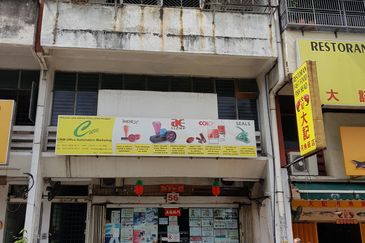
Sri Petaling KL First Floor Shop For Rent
Bandar Baru Sri Petaling, Kuala Lumpur
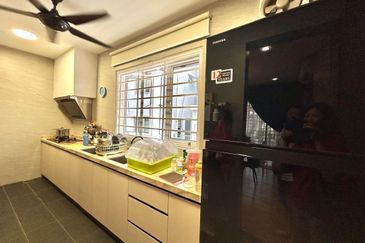
RIMBUN IRAMA @S2 HEIGHTS
Seremban, Negeri Sembilan
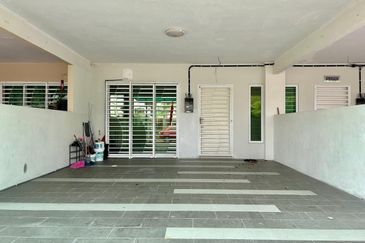
HIJAYU 3A @ BANDAR SRI SENDAYAN
Seremban, Negeri Sembilan
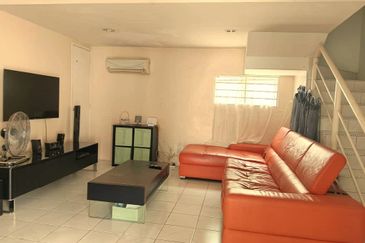
Taman Tun Dr Ismail (TTDI)
Taman Tun Dr Ismail, Kuala Lumpur

hero.jpg?GPem8xdIFjEDnmfAHjnS.4wbzvW8BrWw)
